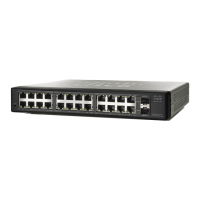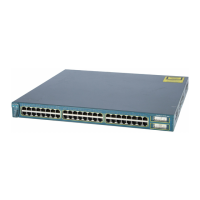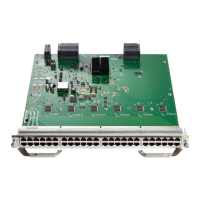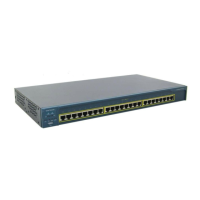• Adjacency Discovery, page 5
• Adjacency Types That Require Special Handling, page 5
• Unresolved Adjacency, page 6
Adjacency Discovery
Each adjacency table is populated as adjacencies are discovered. Adjacencies are added to the table through
indirect manual configuration or dynamically--discovered through a mechanism like Address Resolution
Protocol (ARP). Adjacencies can also be added through the use of a routing protocol, such as Border
Gateway Protocol (BGP) or Open Shortest Path First (OSPF), which forms neighbor relationships. Each
time an adjacency entry is created, a link-layer header for that adjacent node is computed and stored in the
adjacency table.
The adjacency information is subsequently used for encapsulation during Cisco Express Forwarding
switching of packets.
Adjacency Types That Require Special Handling
In addition to adjacencies associated with next-hop interfaces (host-route adjacencies), other types of
adjacencies are used to expedite switching when certain exception conditions exist. Prefixes requiring
exception processing or special handling are cached with one of the special adjacencies listed in the table
below.
Table 1
Adjacency Types That Require Special Handling
Packets of This Adjacency Type Receive This Processing
Null adjacency Packets destined for a Null0 interface are dropped.
Null adjacency can be used as an effective form of
access filtering.
Glean adjacency When a device is connected to a multiaccess
medium, the FIB table on the device maintains a
prefix for the subnet rather than for the individual
host prefixes. The subnet prefix points to a glean
adjacency. A glean adjacency entry indicates that a
particular next hop should be directly connected,
but there is no MAC header rewrite information
available. When the device needs to forward
packets to a specific host on a subnet, Cisco
Express Forwarding requests an ARP entry for the
specific prefix, ARP sends the MAC address, and
the adjacency entry for the host is built.
Punt adjacency The device forwards packets requiring special
handling or packets sent by features not yet
supported in CEF switching paths to the next higher
switching level for handling.
Discard adjacency The device discards the packets.
Drop adjacency The device drops the packets.
Cisco Express Forwarding
Adjacency Discovery
IP Switching Cisco Express Forwarding Configuration Guide, Cisco IOS XE Release 3SE (Catalyst 3850 Switches)
5

